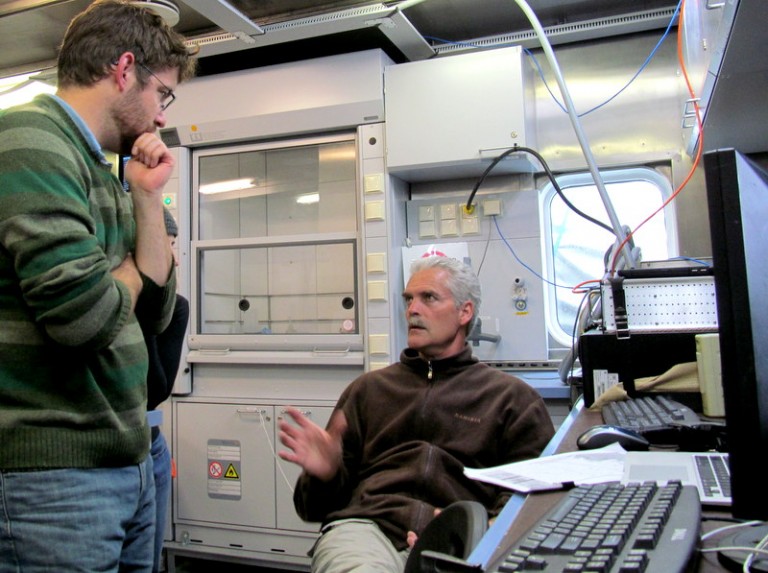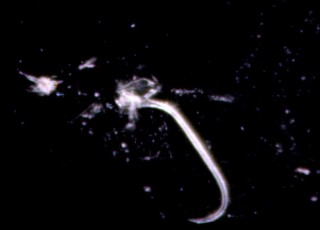
As the R/V Falkor continued its maiden voyage across the North Atlantic on Friday, July 20, the Video Plankton Recorder (VPRII) in tow observed a sharp temperature drop off at approximately 30-meter depth. Water above that thermal layer was about 9 degrees Celsius along the coastal shelf approximately 100 miles from the Newfoundland coastline. Below the depths of 20 to 30 meters, the VPRII recorded temperatures as low as 1.9 degrees below zero Celsius.

Just below that warmer surface layer of water, the VPRII captured many images of a type of plankton called larvacea. Larvacea are urochordates, meaning they have a central nerve chord that runs the length of their dorsal side. A central nerve chord is the mark of a more highly evolved animal, and is shared by fish, mammals, birds, reptiles, and humans.
The presence of larvacea in the colder layers of water along the continental shelf may be a result of both the organisms’ temperature preference and the cold coastal current from the north, which can carry plankton populations south for hundreds of miles, past the Cape Cod area, where the cold waters meet the warm Gulf Stream current flowing northeast and out to sea.
Dr. Cabell Davis, Chief Scientist aboard the R/V Falkor said weather permitting, he and his team would continue to tow the VPR along the coastal shelf until 1 p.m. on Saturday, July 21.
